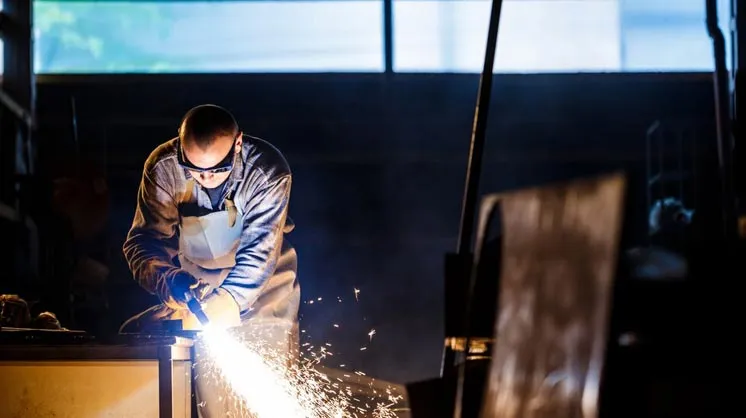27 Mar 2025

The steel fabrication industry is the foundation of everything that makes modern infrastructure. From high-rise buildings to massive bridges, steel fabricators are significant in determining the environment surrounding us. However, with industrial evolution, the need for efficient systems, accuracy, and sustainable approaches also evolves. The steel fabricating sector is transforming through emerging technology solutions along with innovative operational methods because the construction and manufacturing industries are rapidly changing.
The essential function of technology remains vital for boosting efficient steel fabrication productivity through precise methods. As a result of years-long development this sector now operates with increased automation that needs fewer human workers but produces more output. The implementation of CNC machines brought about a transformative shift in the steel component cutting and shaping methods as well as assembly processes.
Automation in steel fabrication improves precision and reduces the amount of material wasted as well as the time taken for production. A good example is robotic welding, which not only provides consistency but also minimizes errors so that stronger and more reliable structures can be formed. Moreover, engineers can see and improve designs before manufacturing through 3D modelling software, which has become a staple in steel fabrication trends.
Steel industry innovations have been identified as the major energy consumers and polluters. Nevertheless, recent innovations are now directed towards sustainability processes. Today many companies are turning to green technologies such as the electric arc furnace which uses scrap metal as its input material rather than raw material. This change therefore makes steel manufacture more environmentally friendly without compromising on its cost-effectiveness.
Another important aspect of sustainability in steel construction innovations is the development of high-strength, lightweight alloys of steel. These materials provide the same strength as conventional steel but consume less raw material; hence the consumption of resources as a whole is diminished. Moreover, there is growing popularity in modular construction approaches where prefabricated components made out of steel are assembled on-site leading to minimal waste.
Perhaps the most notable change in steel fabrication is increased automation. Automation is making everything from robotic arms doing the welding and cutting to artificial intelligence software optimizing production workflows.
A significant innovation is the use of digital twin technology, which models a fabricator's operation using a virtual representation of the facility. That lets the fabricator analyze several scenarios, find possible issues, and optimize production all without interruption to real operations. Another important innovation is predictive maintenance powered by AI, which alerts steel fabricators about impending equipment failures and thus avoids downtime as well as maintenance costs.
Modern steel fabrication facilities are considered to be the future of steel manufacturing through the adoption of Internet of Things technology for advanced production processes. Real-time data analytics and sensing technology allow these plants to track production in order to achieve total quality compliance for each component. Machines equipped with IoT capabilities can talk to one another and make automatic adjustments for better efficiency.
Steel innovations are happening at an unparalleled pace with the increased uptake of Industry 4.0 technologies. Cloud computing, coupled with big data analytics, offers critical insights into material consumption, energy usage, and production efficiency. Companies can thus make well-informed decisions and fine-tune their operations toward optimal productivity under this data-driven paradigm.
Several trends in steel fabrication are shaping the future, but all are driven to some degree by a demand for efficiency, sustainability, and innovation. One notable trend is the increased usage of additive manufacturing, sometimes referred to as 3D printing; this is especially noted in advanced steel fabrication. Although still nascent, 3D printing holds revolutionary potential for the industry by enabling complex steel shapes with near-zero material waste.
Another trend marks the development of hybrid construction methods, combining classic steel fabrication trends with modern technologies. Steel components may, for instance, be prefabricated by automated machinery and assembled on-site by AI-driven cranes and robotic welders. This approach increases accuracy while minimizing labour costs and time in the building process.
Furthermore, it is observable that there is an increasing demand for tailor-made steel components which causes the steel fabricators to embrace flexible manufacturing solutions. Modern steel fabrication incorporates laser cutting, plasma cutting and water jet cutting technologies promoting detailed work, as well as intricate designs. These developments are especially useful in industries like aerospace, automotive and infrastructure where a high degree of accuracy is required.
Despite such rapid development, steel fabricators continue to face many challenges. The upfront costs associated with automation and smart technologies are significant, thereby creating a larger competitive disparity within the marketplace among smaller companies. Additionally, the industry will need to address the skills gap because workers in traditional fabrication are likely to need retraining to use new digital tools and automated systems.
However, these challenges also present opportunities. Those steel construction companies that innovate and invest will be able to produce faster, more accurate, and affordable solutions than their competitors. This is increasingly leading to partnerships between steel fabricators and technology companies, resulting in breakthroughs that continue to drive the sector upward.
Regarding future prospects, it is possible to say that one of the determinants of the fate of steel fabricators will be anything that comes as part of automation in steel fabrication, sustainability and digitalization. In line with new materials and manufacturing processes, the industry will continue to develop itself just to meet the needs of today’s construction and engineering.
Investment in AI and machine learning will take predictive analytics to another level, thus enabling firms to determine the best resource allocation and cut down on operational costs. Green steel production techniques must replace traditional processes to fulfil the demands of attaining net-zero carbon emissions thus sustainability becomes the primary goal.
The steel industry maintains a central role towards transforming today into an improved sustainable future. Future steel manufacturers can refine their operations by taking an active part in creating sustainably built infrastructure to become more resistant.